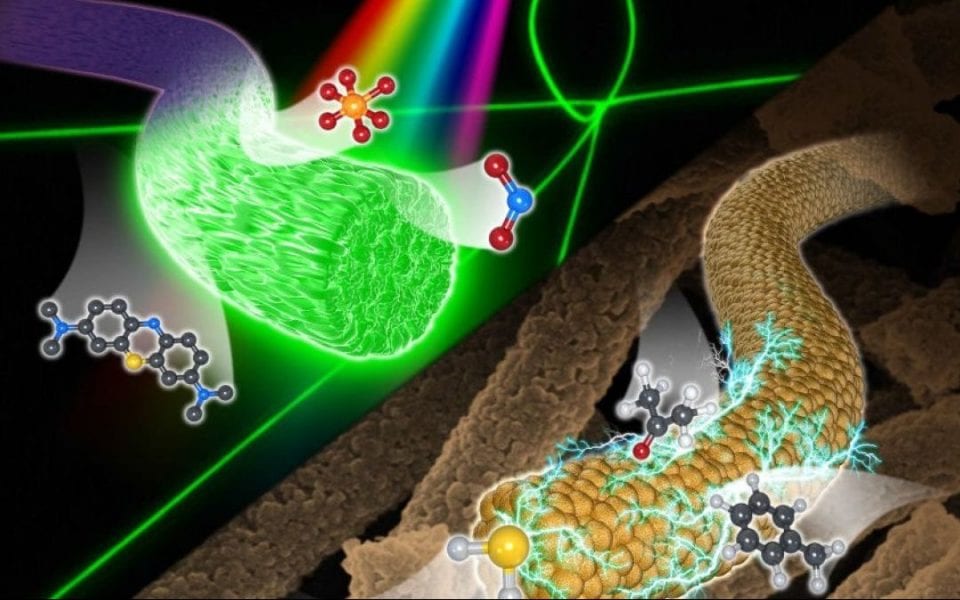Chemical sensors have been essential components in recent years because of their growing importance in environmental monitoring and healthcare. In their recent Review article, Il-Doo Kim and Dario Pisignano, together with co-workers at several South-Korean and Italian institutions, report on the state-of-the-art research progresses of chemiresistive- and optical-type chemical sensors using novel electrospinning techniques.
Electrospinning is a facile and versatile synthetic method to produce one-dimensional (1D) nanofibrous structures with flexibility in material selections including polymer, metal, metal oxides and their composites. The unique structural features of 1D nanofibers include large surface-to-volume ratio and open porosity, which are essential requirements for improving the sensitivity toward chemical species. For the chemiresitive-type sensors, diverse 1D metal oxide nanostructures with optimized surface morphology have been proposed to maximize the gas responding property. In addition, unique catalytic functionalization techniques were introduced to further enhance the sensitivity and selectivity toward chemical gaseous species.
More recently, the chemiresistive-type 1D metal oxide nanostructures have been considered as breath gas analyzers which can selectively detect trace of biomarker molecules in human breath for diagnostic application. In the case of optical-type sensors, various hazardous chemical species can be detected by employing the specific absorption and emission properties of 1D nanostructures. In particular, recent advances in optical sensing platforms such as colorimetric and fluorescence sensors as well as Raman and SERS sensors were introduced. 1D nanofibrous structures assisted by the electrospinning technique offer remarkably enhanced optical sensing properties compared to film or bulk systems, enabling the development of fast and disposable sensing devices.
The authors have summarized the merits and limitations of the chemiresistive- and optical-type sensors as chemical gas analyzers. Furthermore, they have provided a concise summary of most recent research trends and future perspectives of electrospun chemical and optical sensors.

















